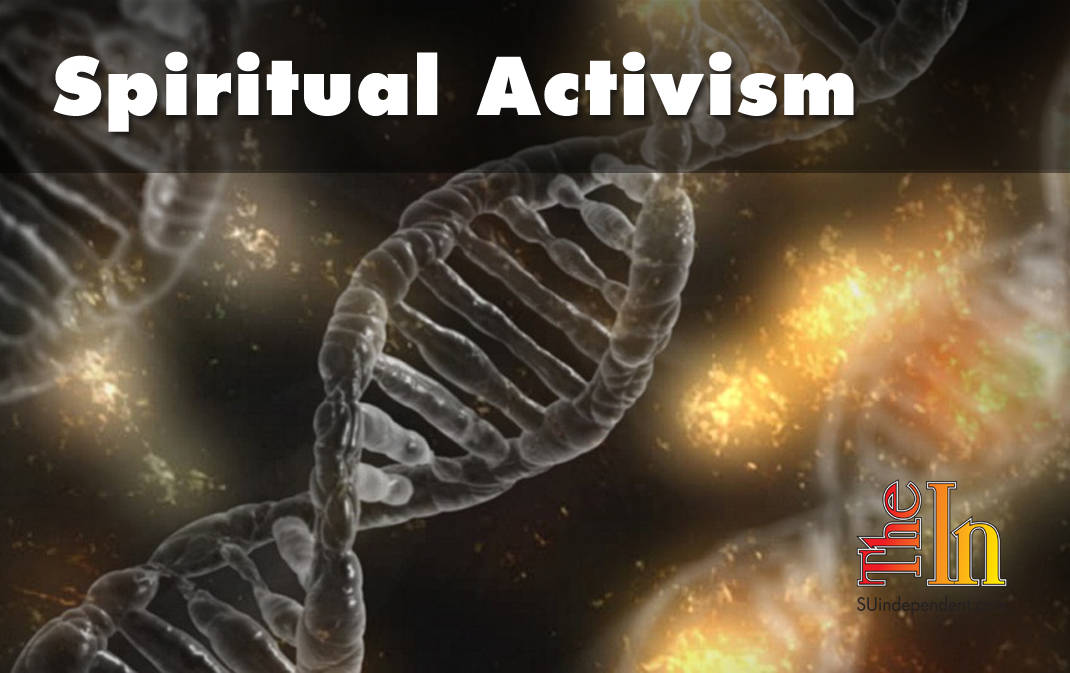 By Russ Cashin
By Russ Cashin
Recently, I wrote about the rising public expressions of racism, bigotry, prejudice, and all forms of discrimination that have increasingly infected our American culture and across the globe, creating the appearance that we are very different from each other and causing us to become further divided in our humanity.
But what would happen to our perspective and in our relationships with others if we really understood the shared origins that are contained within our human genetic code? Could we then understand that we are indeed all connected to each other at the level of our very DNA, experience that connection, and see beyond the outward appearances?
I have always had a keen interest in science coupled with a fascination for the study of human behavior (I will complete my masters in psychology this year.) While space here does not allow me to offer a full explanation of DNA and its impact on us as individuals and collectively as a society, of major significance is the well-known Human Genome Project, which was launched in 1990 and formally completed in 2003. While the goal of this project was finding the genetic roots of disease and treatments, within two years of the completion of that project there was great interest in using genetics as an aid to understanding human ancestry.
For years, I have been involved in family history (or genealogy) in an effort to better understand my heritage. I became interested in my own biological origins and ethnicity when the National Geographic Society launched the Genographic Project on April 13, 2005. The Genographic Project is a multi-year genetic anthropology study that maps historical human migration patterns through the collection and analysis of DNA samples, and as of 2017, over 800,000 participants in over 140 countries have joined the project.
As soon as I heard about the Genographic Project becoming publicly available, I ordered my first DNA kit. The initial results I received were for my male ancestry only, and while they were somewhat limited, I gained an understanding of my paternal ancestry migration routes and origins. This is called a haplogroup and pertains to a single line of descent, usually dating back thousands of years.
Since 2005, I added the mitochondrial DNA test, which refers specifically to the DNA inherited only from the mother, as well as the autosomal DNA test, which gives an approximation of a person’s ethnic makeup as compared to known population groups. The autosomal DNA can also estimate family relationships to about the fifth generation.
While most people do the popular DNA testing such as Ancestry DNA, MyHeritage DNA, or Family Finder DNA, all of these are really just varied autosomal DNA tests. They can help confirm relationships with family members who’ve also been tested to about the fifth cousin, but they won’t help you directly find your missing great-great grandparent. And even though the autosomal test will offer you an “ethnic profile” of sorts, it is a calculation of percentages of population regions that are determined by the extent of the DNA test but isn’t necessarily going to tell you which country your ancestors are from since country borders change over time and DNA predates these artificially constructed borders.
While I found it interesting to learn of my own ethnic mix with Family Finder, it raised even more questions for me. Even if your autosomal DNA came back and you are informed you are 100% European, what does that really mean? And what about your ancient ancestors who lived prior to the migration into the European continent?
With all of the considerable DNA testing I’ve completed over the last 12 years, the most important understanding I’ve gained is something I learned when I received my first Y-DNA results in 2005 — that we are, without question, all related. Further, we are not as biologically different as appearances would suggest as it is estimated that the average DNA variance from one person to another is no more than 0.5%. This means that we are 99.5% alike! While you and I may not be close cousins within the last few hundred or even a few thousand years, I can assure you that if we go back far enough, we have a commonly shared ancestor in the distant past.
To my surprise, on my paternal side of the family following the Y-DNA back through each male parent to about 50,000 years ago I found my ancestors living on the northeastern coast of Africa. In fact, nearly all men today can trace their DNA back 60,000 years ago into East Africa to our shared ancestor, the male Y-DNA “Adam” (after Adam in the Old Testament).
Likewise, all modern people today can trace their mitochondrial DNA back about 120,000 years ago to one woman who has been identified as the mitochondrial “Eve” (after Eve of the Old Testament).
I have known for over 12 years that we are all originally from Africa and that the “ethnic” differences that we see as separating us are fairly recent developments. I learned when analyzing my autosomal DNA that I have one allele (one of two or more alternative forms of a gene that arise by mutation) that gives me that European fair skin. When I researched this further, I discovered this developed somewhere between 6,000 and 12,000 years ago and that most people who carry this variant can trace their ancestry back to one person about 10,000 years ago. Prior to this time, our European ancestors were primarily brown-skinned.
So whether you’ve had your DNA tested or not, perhaps it’s time to realize that we are not so different as we may have been led to believe and that there are no “superior” or “inferior” races or ethnicities. In fact, we all belong to the same race — the human race. We all arose from one genetic Adam and Eve back in the day when brown skin was in.
Now if I could just get that tan I’ve always wanted.



